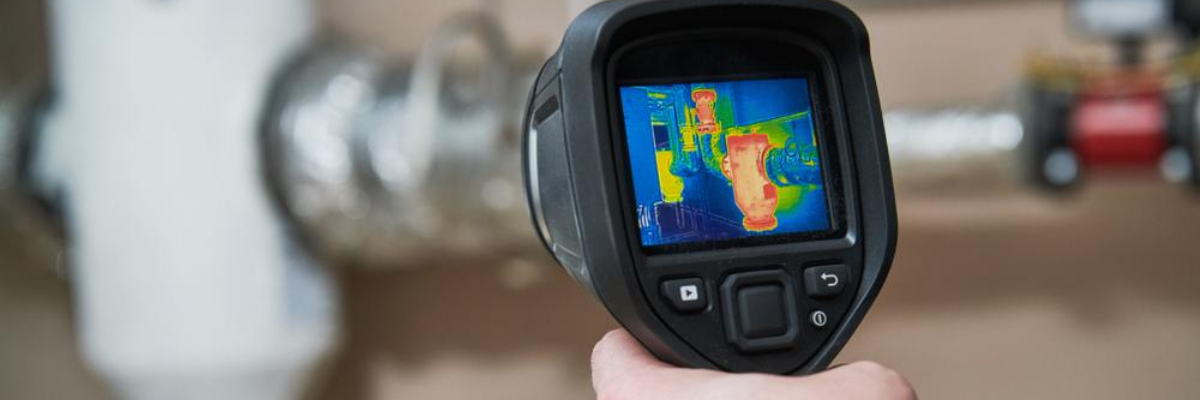What is a thermal imager, and why is it a useful HVAC & Refrigeration tool?
A thermal imager, or thermal imaging camera, is a compact tool that helps HVAC and Refrigeration service technicians to diagnose the root cause of an equipment problem, and quickly locate the component that needs replacing. Its uses go far above and beyond a handheld thermometer and help to speed the diagnostic process.
Thermal imagers use Infrared Thermography (IRT) to precisely measure the surface temperature and patterns of heat within equipment components. They can even “see” through walls and inside pipes. Being able to see the distribution of heat visually is extremely helpful in identifying problems that are easy to miss.
Technicians can even use a thermal imager tool to prove your diagnosis to customers, and to show that you have corrected the problem.
Here are just a few of the issues you can detect with this handy HVAC and Refrigeration tool:
- Electrical problems
- Mechanical failures
- Air flow issues
- Leaking pipes
- Clogged drain lines and other sources of water leaks
- Presence of mold
- Sources of heating and cooling loss (including duct leaks or blockages)
The great news is that over the past few years, prices for thermal imager tools have become much more affordable, making them a worthwhile investment for HVAC and Refrigeration service professionals.
VIDEO SERIES: Using a thermal imager for HVAC & Refrigeration service
Watch these videos from Milwaukee Tool to learn how HVAC and Refrigeration service technicians can use thermal imaging devices to detect and repair issues in the field.
Why use a thermal imager?
Preventative maintenance on an air handler:
Checking a chiller unit:
Checking a rooftop air conditioner:
Checking for mold behind walls:
Tips and tricks for using a thermal imager:
More tools information for HVAC & Refrigeration techs
If you’re new to the field, here are some additional resources you might find helpful:
HVAC Technician Tool List: Must-Have Tools for Service
How to Clean & Disinfect Tools
HVAC & Refrigeration Safety: Personal Protective Equipment (PPE)

